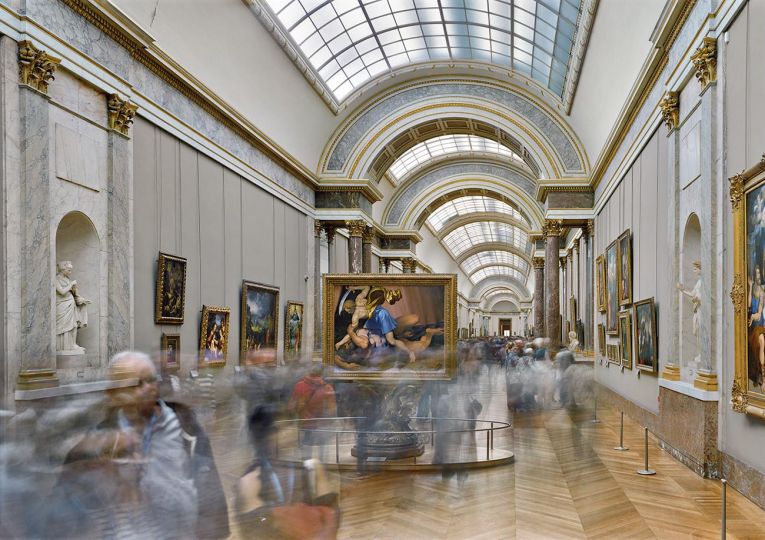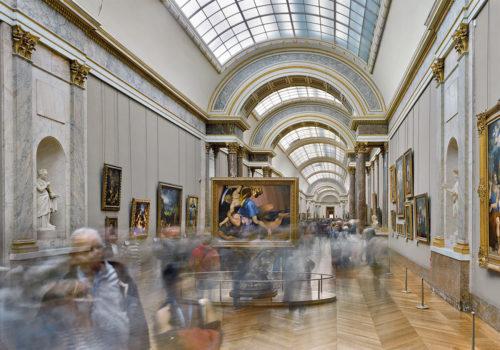“I wish for my images to distill scenes ranging from the ephemeral to the eternal, from the esoteric to the symbolic. A current that underlies my work is the concept of preservation. I make every effort to be a faithful visual recorder of the world around me, a world in flux that, at very least in my mind, deserves preservation, and that I constantly seek to expand.”
California based, Hiroshi Watanabe was born in Sapporo, Japan, graduating from Nihon University’s Department of Photography in 1975. He moved to Los Angeles after graduation and later established his own production company for TV commercials. In 1993, he received an MBA degree from UCLA Business School. In 2000, he closed his production company and has worked full time as a photographer ever since. While living in the U.S., Watanabe returned to Japan to photograph a series of portraits. He first chose to photograph the culture of Kabuki in small theatre companies in rural towns, opposed to the more famous Tokyo companies. One of the companies he chose, Matsuo Kabuki, was made up entirely of children.
“The Kabuki players you see in my photographs are not with the mainstream Kabuki companies in Tokyo. They are with a small company in a town called Nakatsugawa. The town is cozily nested at the foot of Japan Alps Mountains. It was situated at the halfway point between Tokyo and Kyoto of the old main road called Nakasendo in Edo era, and because of this strategic location, it flourished as a trading post about three hundred years ago. The town became rich, but had no cultures as they are away from big cities. They had to wait for Kabuki Company to arrive, which comes only once a year. Being tired of waiting, they finally decided to do Kabuki by themselves. They built a theater and hired make-up artists, costumers, and stage craftsmen from Kyoto just for themselves, and they started to play their favorite stories. Thus it became their tradition.”
“The Kabuki players are hidden in heavy make-up and wardrobes in a made-up world. But when they sit in front of my camera between plays, they are so much saturated (and worried) in their roles, that they pay very little attention to my existence. They are struck with stage fright and they repeat their lines over and over as I photograph. Remember this is not what they do everyday. On the other hand, they are not afraid of me, or of anyone else, as their faces are shielded by the heavy make-ups. They can be themselves without worrying about other people, as if they were in the masquerade. They feel that no one knows who he or she really is, or at least people know that they were in a fictional world. At those moments, they are much closer to me.”
This work was later part of a series titled, FACES, various collections of portrait photographs from the San Lazaro Psychiatric Hospital, Noh Masks of Naito Clan, Ena Bunraku and Kabuki Players.
The “Suo Sarumawashi” (photo-eye Editions, 2010) project is another step in Watanabe’s FACES series. Sarumawashi, literally means “monkey dancing”, evolved over a 1000-year history in Japan. Ancient Japanese chronicles refer to it as a form of religious ritual designed to protect the horses of warriors. It later developed into a form of festival entertainment, and was performed all over Japan from temples to imperial courts. Today, Sarumawashi is ranked alongside Noh and Kabuki as one of the oldest and most traditional of Japan’s performing arts. Watanabe remembered those performing monkeys from his childhood and traveled to Japan to rediscover them. He produced this series of formal portraits made in a make-shift studio on location in Japan. His portraits portray the monkeys with great dignity and respect. “The monkeys are trained to mimic human expressions and movements on stage and that is what intrigued me. I believe they actually have similar, if not deeper and subtle, feelings as humans.”
Elizabeth Avedon
Hiroshi Watanabe’s “Suo Sarumawashi” can be seen at the upcoming Photo L.A, Booth B-205, 14/1-17/1 2011
















